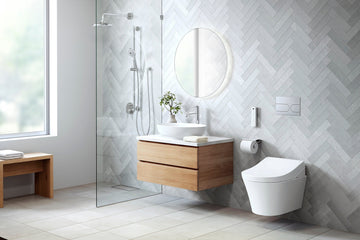In the realm of modern design and technology, innovative toilets for wheelchair users are paving the way for a more inclusive future. This advancement is not just a matter of convenience; it's about dignity, independence, and equal access. For industry quality assurance experts, understanding the nuances of these innovations is crucial. This article delves into the groundbreaking features that are reshaping the landscape of accessible bathrooms.

The Need for Innovation in Accessible Toilets
Traditional bathroom designs often fall short in meeting the needs of wheelchair users, leading to discomfort and limited independence. The introduction of innovative toilets for wheelchair users addresses these challenges by offering features specifically tailored to enhance usability and comfort.
One of the primary challenges faced by wheelchair users is the limited space and maneuverability in conventional bathrooms. Innovative designs are now incorporating larger spaces, strategically placed grab bars, and adjustable toilet heights to cater to individual needs. These modifications not only improve accessibility but also ensure safety and ease of use.
Features of Innovative Toilets for Wheelchair Users
Automated Functions
One of the standout features of these modern toilets is automation. Automated flushing, lid opening and closing, and even self-cleaning mechanisms reduce the need for manual handling, thereby offering greater convenience for users. Technologies like motion sensors and voice control are becoming increasingly popular, providing a hands-free experience that is both hygienic and user-friendly.
Adjustable Heights and Angles
Adjustable toilet heights cater to the varying needs of users, allowing for a more personalized experience. This feature is particularly beneficial for those who require assistance in transferring from a wheelchair to the toilet. Additionally, some toilets offer adjustable seating angles, ensuring comfort and reducing strain during use.
Enhanced Hygiene Features
Hygiene is a critical concern, especially in shared or public facilities. Innovative toilets now come equipped with advanced bidet systems, such as those discussed in bidet hygiene tips, offering customizable water temperature and pressure settings for optimal cleanliness. This feature not only promotes better hygiene but also enhances the overall user experience.
Impact on Industry Quality Assurance
Industry QA professionals play a pivotal role in ensuring that these innovative solutions meet the highest standards of safety, functionality, and durability. The integration of advanced technologies requires rigorous testing and evaluation to guarantee that each product is safe for user interaction.
Quality assurance in this sector involves assessing the reliability of automated systems, the durability of materials used, and the overall user experience. By adhering to stringent standards, QA experts help maintain the integrity of these products, ensuring they deliver on their promise of accessibility and convenience.
Looking Ahead: The Future of Accessible Toilets
The future of innovative toilets for wheelchair users is bright, with continuous advancements on the horizon. As technology evolves, we can expect even more sophisticated features that cater to diverse user needs. The rise of smart toilets, as explored in high-tech toilet innovations, is a testament to the industry's commitment to innovation and accessibility.
Furthermore, collaboration between designers, engineers, and industry QA professionals will be crucial in driving these innovations forward. By working together, they can ensure that future designs are not only technologically advanced but also practical and user-centric.

FAQs
What are the main benefits of innovative toilets for wheelchair users?
These toilets offer enhanced accessibility, independence, and comfort. Features like automated functions, adjustable heights, and advanced bidet systems improve the overall user experience.
How do automated functions in toilets benefit wheelchair users?
Automated functions, such as motion sensors and voice controls, provide a hands-free experience, reducing the need for manual handling and enhancing hygiene and convenience.
Why is quality assurance important in the development of these toilets?
Quality assurance ensures that the toilets meet high standards of safety and functionality. It involves rigorous testing of materials and technologies to guarantee a reliable and user-friendly product.
This article contains affiliate links. We may earn a commission at no extra cost to you.






